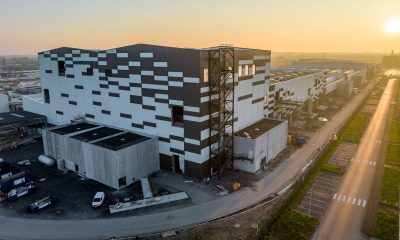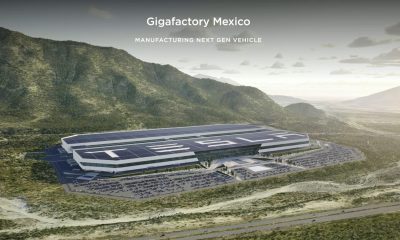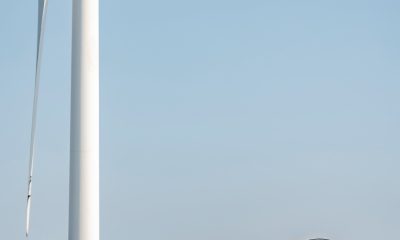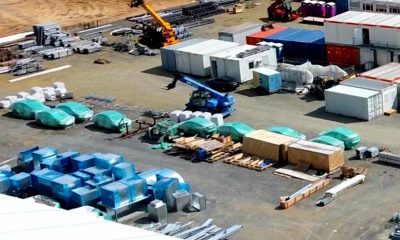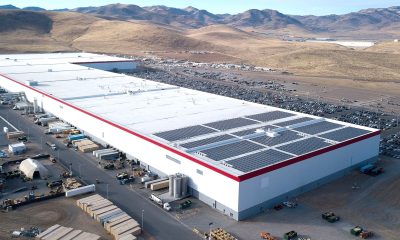News
Top 6 tidbits about Tesla’s Gigafactory revealed through building permits
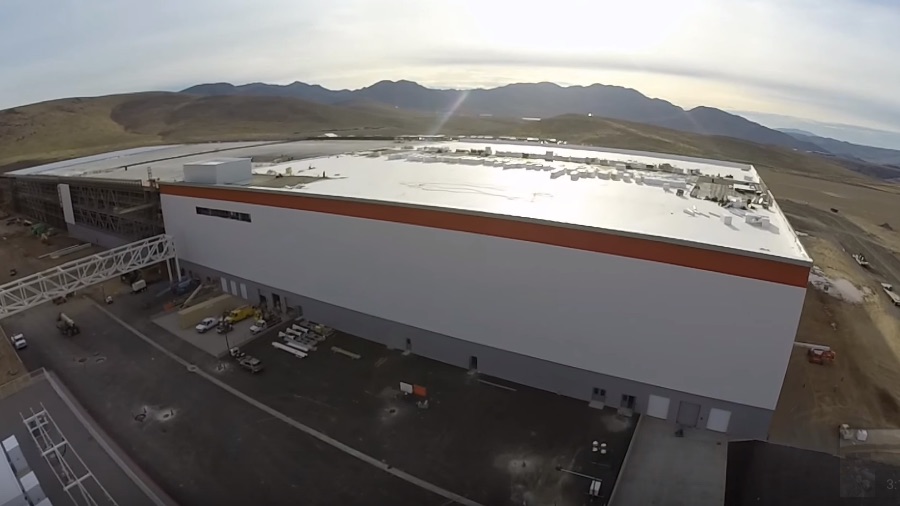
It’s no secret that Tesla’s $5 billion dollar Gigafactory 1 located just east of Reno, Nevada will be a critical component to the company’s goal of scaling mass production of batteries for its upcoming Model 3 and Tesla Energy product line. We know the Gigafactory will be one of the largest buildings in the world projected to occupy 13.6 million square feet, and we know the factory will be powered by renewable energy sources, with the goal of achieving net zero energy. However, construction permits filed by Tesla provide even more interesting insight to Gigafactory 1 that you may not already know.
Here are the top 6 tidbits of Tesla’s Gigafactory as revealed through building permits received by Tesla. Information is provided courtesy of analyst Jack Cookson of BuildingZoom.
1) July 29 launch event attendees may witness battery cells being made
Construction permit #0934363 indicates that the $51 million dollar “Battery Cell Manufacturing Equipment Installation” project is estimated to be complete on July 20th. This means that attendees of the highly anticipated July 29 Gigafactory ‘Grand Opening’ event may actually have the opportunity to see battery cells being manufactured.
2) Tesla can do it all
Tesla filed for building permits themselves as opposed to using a General Contractor. According to a report put together by Cookson of BuildZoom,
“Something we found different about this project is that Tesla filed the majority of their own building permits and is actually the contractor for the project. This means, that Tesla had to acquire a contractor license in Nevada and has taken on far more work than if they had just hired a General Contractor.”
This may not be such a bad idea considering Tesla’s recent involvement in a foreign worker scandal under poor supervision and management by factory sub-contractors.
3) Tesla’s Gigafactory is designed for earthquakes
Most buildings rest on a single foundation, however the enormous rectangular shaped Gigafactory rests on four individual foundations. This is designed so that each section of the building can shift independently of one another in the event of an earthquake.
4) The Gigafactory doesn’t stop growing
Tesla received a permit to expand the Gigafactory with a 4th Area ‘D’ and 5th Area ‘E’. The $63 million dollar D and E project is scheduled to be complete by the end of the year. Tesla’s enormous Gigafactory is currently only 14% of the total planned floor space, but will reach an astounding 13.6 million square feet when complete.
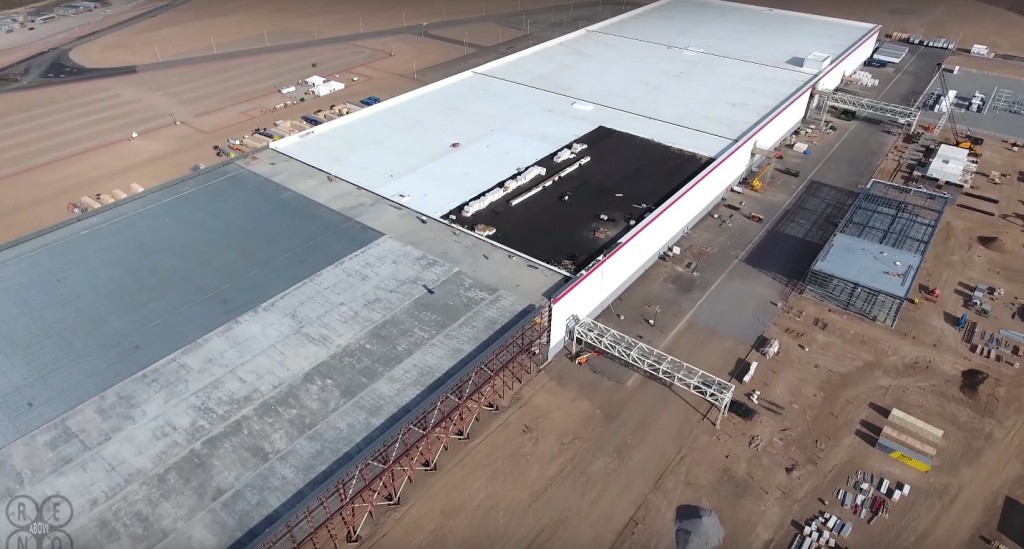
Overhead view of Area ‘D’ captured by drone in April 2016
5) Tesla donated a fire truck to the local fire department
Tesla spent a total of $4.7 million dollars on fire safety, including a permit for a fire command center. Part of that included a donation of a fire engine to the local Storey County, Nevada fire station.
6) Giant refrigerator + water tank twice the size of an olympic pool
1 of the 84 permits filed indicates that the Gigafactory will have a giant chiller yard which will presumably be used for testing batteries while keeping them in a cool state.
The factory also has a a 1.5 million gallon water tank on site that is more than twice the size of an olympic sized swimming pool. Details within the permit do not indicate what this water tank will be used for.
News
Tesla Sweden faces new pressure in Sweden as Assa Abloy joins union action
The sympathy strike will block Assa Abloy’s 330 employees across six Swedish facilities from servicing or maintaining locks and gates used at Tesla Sweden’s sites.
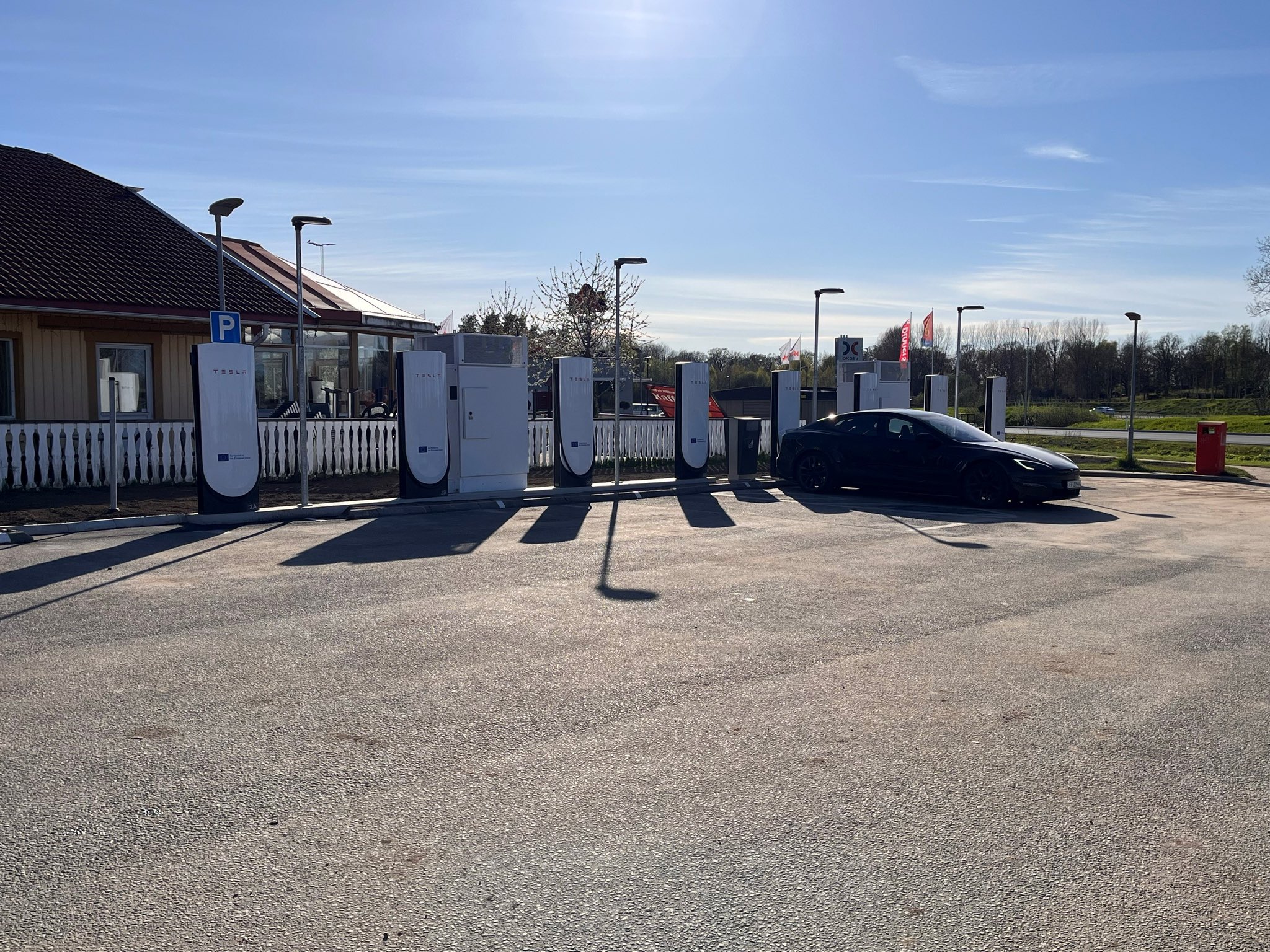
The labor standoff between Tesla and Sweden’s IF Metall union has widened again, this time pulling in Assa Abloy Industrial, a manufacturer of industrial doors and locks.
IF Metall announced a new sympathy strike halting all Assa Abloy services for Tesla, set to take effect November 4, according to Dagens Arbete (DA). The move is aimed at further pressuring Tesla into signing a collective agreement after nearly two years of ongoing labor conflict.
New strike targets Tesla’s industrial operations
The sympathy strike will block Assa Abloy’s 330 employees across six Swedish facilities from servicing or maintaining locks and gates used at Tesla Sweden’s sites. IF Metall hopes the measure will disrupt Tesla’s daily operations and highlight the growing solidarity among Swedish companies.
Assa Abloy becomes the latest in a line of firms drawn into the dispute, with the Swedish Mediation Institute now logging fourteen conflict notices since September. The escalation shows that unions and partner industries are aligning to support of IF Metall’s campaign to secure a collective bargaining deal, something Tesla has consistently resisted.
IF Metall says Tesla must understand Sweden’s labor model
IF Metall chair Marie Nilsson recently reiterated her call for Tesla Sweden to reconsider its stance on organized labor, noting that Sweden’s union system differs sharply from the more adversarial model in the United States.
“I can certainly understand that Elon Musk and Tesla are skeptical of the trade union movement,” Nilsson said. “They have experience with American unions that operate in a completely different environment and that have to be militant in a different way.”
Nilsson emphasized that Swedish unions function cooperatively and that signing a collective agreement locally does not commit Tesla to similar deals elsewhere. “Let’s give us a chance,” she added. “It is the practical system we have here to regulate the conditions.”
News
Elon Musk: Tesla autonomous driving might spread faster than any tech
The CEO noted that “hardware foundations have been laid for such a long time.”

Elon Musk has shared one of his most optimistic forecasts for Tesla’s self-driving rollout yet. As per the CEO, Tesla’s self-driving system could see the fastest technological adoption in history, thanks to the fleet’s capability to gain autonomous capabilities through a software update.
The CEO shared his forecast in a post on social media platform X.
Tesla’s aims to scale autonomy
Musk’s comment came as a response to industry watcher Sawyer Merritt, who posted a comparison between the geofence of Tesla’s Robotaxi network and Waymo’s service area. As can be seen in the graphic, Tesla’s Austin geofence has gotten noticeably larger compared to Waymo’s service area.
In his response, Musk stated that “Tesla autonomous driving might spread faster than any technology ever.” He also stated that “hardware foundations have been laid for such a long time,” as a software update could unlock full autonomy “for millions of pre-existing cars in a short period of time.”
Musk’s comment bodes well for Tesla’s Robotaxi ambitions, which seem to be finally in reach with the deployment of Unsupervised FSD in vehicle factories, as well as Austin and the Bay Area. For now, however, Tesla’s Austin Robotaxis and Bay Area ride-hailing vehicles are still operated with a safety monitor in the driver’s seat.
Tesla’s latest Austin expansion
Tesla recently expanded its Austin Robotaxi service area this week to 243 square miles, its largest yet and nearly triple the coverage from two months ago. The move outpaces Waymo’s local service footprint, which remains at around 90 square miles.
The expansion marks Tesla’s second major Austin update since August and emphasizes its push to dominate the autonomous ride-hailing landscape. With both Tesla and Waymo racing to prove scale and reliability, Musk’s confidence suggests the real contest may be about who can move fastest once the tech flips on across Tesla’s fleet. Once that happens, Tesla would effectively be able to win the self-driving race.
News
Tesla sends clear message to Waymo with latest Austin Robotaxi move
It is the first expansion Tesla has made in Austin since the one on August 26. The company still operates in the Bay Area of California as well, referring to that program specifically as a “ride-hailing service.”

Tesla has sent a clear message to Waymo with its latest move to its Robotaxi program in Austin, Texas.
Tesla and Waymo are the two true leaders in autonomous ride-hailing to an extent. Tesla has what many believe is a lot of potential due to its prowess with the Supervised Full Self-Driving suite. It is also operating a driverless Robotaxi service in Austin with a “Safety Monitor” that sits in the passenger’s seat.
Tesla explains why Robotaxis now have safety monitors in the driver’s seat
The two companies have been competing heavily in the market since they both launched driverless ride-hailing services in Austin this year: Waymo’s in March and Tesla’s in June.
One of the main drivers in the competition between the two is service area size, or the geofence in which the cars will operate without a driver. In August, the two were tied with a service area of about 90 square miles (233.099 sq. km).
Tesla then expanded to about 170 square miles (440.298 sq. km) on August 26, dwarfing Waymo’s service area and expanding to freeways. Tesla’s freeway operation of the Robotaxi suite requires the Safety Monitor to be in the driver’s seat for safety reasons.
On Tuesday evening, Tesla made another move that sent a clear message to Waymo, as it expanded once again, this time to 243 square miles (629.367 sq. km).
This is according to Robotracker:
Here’s a comparison of Tesla’s geofence in Austin vs. Waymo’s
Tesla’s now spans 243 square miles, almost three times the size of Waymo’s at 89 square miles https://t.co/OCAHQDQhzb pic.twitter.com/wq5bHQXCp4
— TESLARATI (@Teslarati) October 29, 2025
It is the first expansion Tesla has made in Austin since the one on August 26. The company still operates in the Bay Area of California as well, referring to that program specifically as a “ride-hailing service.”
Yesterday, it expanded that service to the San Jose Mineta International Airport, something it has been working on for several months.
Waymo has its own set of distinct advantages over Tesla as well, as it operates in more cities and states than the EV maker. Waymo currently has its autonomous vehicle services in Phoenix, Arizona, San Francisco, Los Angeles, Austin, and Atlanta, Georgia.
Tesla plans to have half of the U.S. population with access to the Robotaxi platform by the end of the year.
-
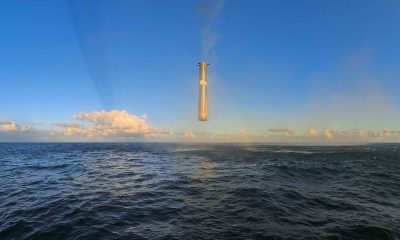
 Elon Musk2 weeks ago
Elon Musk2 weeks agoSpaceX posts Starship booster feat that’s so nutty, it doesn’t even look real
-

 Elon Musk2 weeks ago
Elon Musk2 weeks agoTesla Full Self-Driving gets an offer to be insured for ‘almost free’
-
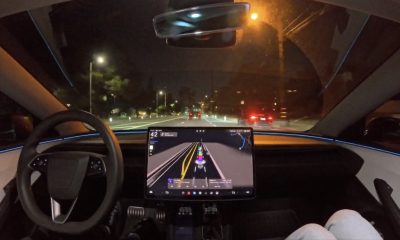
 News2 weeks ago
News2 weeks agoElon Musk confirms Tesla FSD V14.2 will see widespread rollout
-
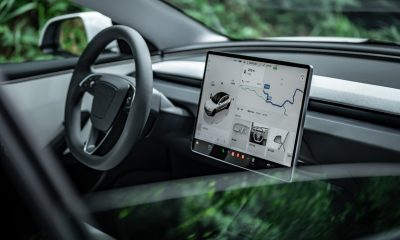
 News2 weeks ago
News2 weeks agoTesla is adding an interesting feature to its centerscreen in a coming update
-
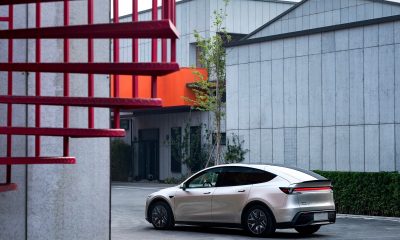
 News2 weeks ago
News2 weeks agoTesla launches new interior option for Model Y
-
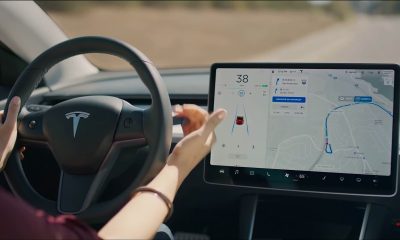
 News2 weeks ago
News2 weeks agoTesla widens rollout of new Full Self-Driving suite to more owners
-
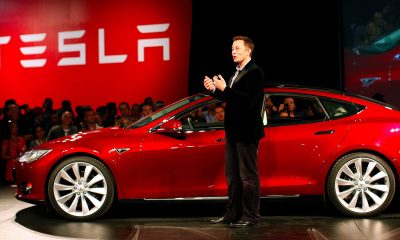
 Elon Musk2 weeks ago
Elon Musk2 weeks agoTesla CEO Elon Musk’s $1 trillion pay package hits first adversity from proxy firm
-

 News1 week ago
News1 week agoTesla might be doing away with a long-included feature with its vehicles


